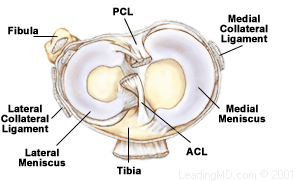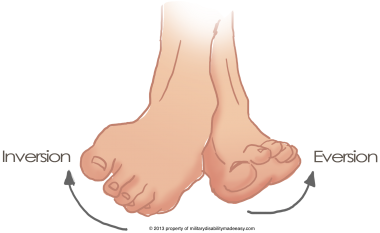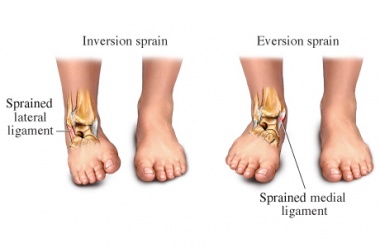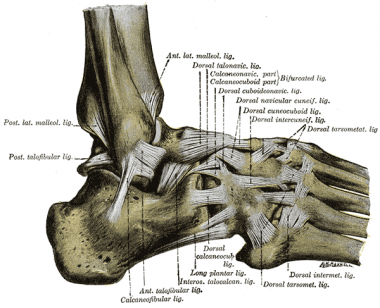Reference Page for Media-related Source Code
Introduction[edit | edit source]
This page serves as a convenient location for copying wikitext related to media that you are adding to an article.
Images[edit | edit source]
View Adding images tutorial if you have not done so before.
Please note that placement of images is only apparent when viewing a Physiopedia article on a larger device such as a laptop or tablet. When viewed on a smartphone, images will not be justified (e.g. to the right or left); rather, they will appear *** with the text, as per the screenshot . ***Similarly, the size of an image will automatically adjust on a smartphone screen.
Single Images[edit | edit source]
Thumbs etc
You can choose to justify your image to the left and your text will wrap around it...
...or centre your image...
...or right justify.
Multiple Images[edit | edit source]
Two Side by Side[edit | edit source]
Three Side by Side[edit | edit source]
Videos[edit | edit source]
View Adding video tutorial if you have not done so before.
Single Video[edit | edit source]
| [2] |
| [3] |
Multiple Videos[edit | edit source]
Two Side by Side[edit | edit source]
| [4] | [5] |
Three Side by Side[edit | edit source]
| [6] | [7] | [8] |
Two x Two Grid
| [9] | [10] |
| [11] | [12] |
Video and Image[edit | edit source]
| [13] |
Table[edit | edit source]
Table quick button
| Exercise Type | Methods | Recommended Dosage | Effects on Pulmonary Function |
|---|---|---|---|
| General Exercises | See Table 2 below for recommended exercises to include in the exercise program[14] | 2 Times Per Week Minimum, For 6 Months | Increased Functional Capacity, Improved Chest Expansion. |
| Pilates[15] | Consists of a supervised Pilates session. The difficulty of the movements should be easy to moderate. Difficulty not to exceed 14 on the BORG scale. | 1 Hour Sessions, 3 Times Per Week, For 12 Weeks | Significant Improvements In Chest Expansion. |
| Incentive Spirometry[16] | This is a session of breath holding and controlling breaths. Patients should carry out 3-5 second breath holds and carry out Forced Expiratory Techniques interspersed between breath holds. This treatment should be combined with General Exercises and should not be used as a sole treatment (see above for general exercises | 30 Minute Sessions, Once Per Day, For 16 Weeks | Improved Chest Expansion and Improved Forced Vital Capacity |
| Inspiratory Muscle Training[17] | The supervised exercise program, delivered by a qualified physiotherapist, should include; motion and flexibility exercises of the cervical, thoracic, and lumbar spine; stretching of the hamstring muscles, erector spine muscle, and shoulder muscles; control abdominal and diaphragm breathing exercises and chest expansion exercises. In addition to these exercises at home patients should perform six loaded inspirations with a 60 second rest period between each inspiration. This sequence of six exercises continued with 45, 30, 15, 10 and five second rest periods up to 36 loaded inspirations. A rating of more than 17 on the BORG requires the patient to stop exercising. | 40 minute session (supervised), Once Per Week, 5 Unsupervised Home Exercise Sessions Per Week | Increased Aerobic Capacity, Improved Resting Pulmonary Function and Ventilatory Efficiency. |
| Manual Mobilisation [18] | Both active angular and passive mobility exercises can be used in the physiological directions of the joints in the spinal column and the chest wall in flexion, extension, lateral flexion and rotation and in different starting positions. Passive mobility exercises consist of general, angular movements and specific translatory movements. | 1 Hour Sessions, 2 Times Per Week, for 8 Weeks | Improved Chest Expansion, Posture and Spinal Mobility |
| Aerobic Exercise[19] | Research shows that in the short term aerobic exercise has a major effect of all symptoms relating to ankylosing spondylitis. Although there is no bad form of aerobic exercise, studies show that swimming is the best for pulmonary rehabilitation. Studies also show that high impact contact sports should be avoided as this can have a negative impact on symptoms relating to AS | 1 hour per day, 5 days per week. (more can be done however should not achieve more than 17 on the BORG Scale | Improved Chest Expansion, Improved Functional Capacity and Decreases the Chance of Respiratory Failure. |
| Exercise 1 Basic exercise: Walking slowly back and forth on a balance board (1 step = 3 seconds). The contralateral leg swings through and nearly touches the ground |
Exercise 2: Basic exercise: Single leg (knee and hip flexed) stance on exercise mat with the contralateral leg flexed. Lower and raise the body. Distribute load on the foot. Only small knee movements to the left and right are allowed. |
Exercise 3: |
Exercise 4: Basic exercise: Maintain balance in single-leg stance elevating the contralateral leg against resistance of an elastic strap. Hold 30 seconds each leg. |
Exercise 5: Basic exercise: Maintain balance in single leg stance on inversion-eversion tilt board. The contralateral leg rested on an inclined surface nearly without being loaded. |
| Variation 1: Walking faster than before on the balance board. Way back: slowly with same execution as above. |
Variation 1: Single limb stance as above opposite to a partner. A ball is passed to the partner. After catching the ball the position is controlled for 2 seconds. Pass the ball back and forth |
Variation 1: Jump from one leg to the other on an exercise mat with a partner. Disturb each other during the flight phase (hand contact) and control the landing and stance for 4 seconds. |
Variation 1: Maintain balance in single leg stance ( eyes closed) elevating the contralateral leg against resistance of an elastic strap. |
Variation 1: Maintain balance in single leg stance on inversion-eversion tilt board. The contralateral leg rested on an inclined surface nearly without being loaded. This with a partner. Pass a ball and control stance after catching the ball. |
| Variation 2: Stance on a balance board. The contralateral leg moves a ball that lies on the ground in circles. Focus on the supporting leg. |
Variation 2: Single leg stance on a soft mat. Balance a ball on the dorsum of the dorsum of the elevated contralateral foot. |
Variation 2: Jump from one leg to the other on an soft exercise mat with a partner. Disturb each other during the flight phase (hand contact) and control the landing and stance for 4 seconds. |
Variation 2: Maintain balance in single leg stance moving the contralateral leg sideways against resistance of an elastic strap. Evert the lateral edge of the contralateral toot. |
Variation 2: |
Presentation[edit | edit source]
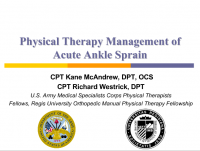 |
Physical Therapy Management of Acute Ankle Sprain
This presentation was created by Rich Westrick and Cody McAndrew as part of the Regis University OMPT Fellowship. Physical Therapy Management of Acute Ankle Sprain/ View the presentation |
- ↑ Dr. Bertram Zarins, MD. Knee Ligament Anatomy Animation. Available from: http://www.youtube.com/watch?v=RTV5Yo3E7VQ[last accessed 04/10/14]
- ↑ Dr. Bertram Zarins, MD. Knee Ligament Anatomy Animation. Available from: http://www.youtube.com/watch?v=RTV5Yo3E7VQ[last accessed 04/10/14]
- ↑ Physical Therapist Assistant. Parkinson's Disease Gait Training. Available from: http://www.youtube.com/watch?v=v008VgRgJt8 [last accessed 09/09/16]
- ↑ Via Christi. Musculoskeletal Physical Exam: Ankle. Available from: https://www.youtube.com/watch?v=QiSm8rz2cmo [last accessed 24/03/2015]
- ↑ Massage Therapy Practise. Ankle Palpation. Available from: https://www.youtube.com/watch?v=uI8Z0obhpew [last accessed 24/03/2015]
- ↑ Coordinated Health TV. Ankle Sprains Part 1: Anatomy. Available from: https://www.youtube.com/watch?v=PDFbZFNtPfs[last accessed 24/03/2015]
- ↑ Coordinated Health TV. Ankle Sprains Part 2: Symptoms & Evaluation. Available from: https://www.youtube.com/watch?v=dP17ZY3zxa4 [last accessed 24/03/2015]
- ↑ Coordinated Health TV. Ankle Sprains Part 3: Rehab & Protection. Available from: https://www.youtube.com/watch?v=dznWBbwLq6k[last accessed 24/03/2015]
- ↑ Denver-Vail Orthopedics. Ankle Sprains Part 1 How they occur, what ligaments are injured and initial treatment. Available from: https://www.youtube.com/watch?v=B0-n-ndTAX0[last accessed 24/03/2015]
- ↑ Denver-Vail Orthopedics. Ankle Sprains Part 2 Stretching and Range of Motion Exercises. Available from: https://www.youtube.com/watch?v=YHJbvf4TW2Y[last accessed 24/03/2015]
- ↑ Denver-Vail Orthopedics. Ankle Sprains Part 3 Stretching and Range of Motion Exercises. Available from: https://www.youtube.com/watch?v=u6xRWb9dFbU[last accessed 24/03/2015]
- ↑ Denver-Vail Orthopedics. Ankle Sprains Part 4 Proprioception - Balance. Available from: https://www.youtube.com/watch?v=AsEV5OYghSQ[last accessed 24/03/2015]
- ↑ Dr Glass DPM. Ankle Sprain Injury Explained. Available from: http://www.youtube.com/watch?v=_u5w856Yjvg [last accessed 28/08/12]
- ↑ Ince G, Sarpel T, Durgun B, Erdogan S. Effects of a multimodal exercise program for people with ankylosing spondylitis. Physical therapy. 2006 Jul 1;86(7):924-35.
- ↑ Altan L, Korkmaz N, Dizdar M, Yurtkuran M. Effect of Pilates training on people with ankylosing spondylitis. Rheumatology international. 2012 Jul 1;32(7):2093-9.
- ↑ So MW, Heo HM, San Koo B, Kim YG, Lee CK, Yoo B. Efficacy of incentive spirometer exercise on pulmonary functions of patients with ankylosing spondylitis stabilized by tumor necrosis factor inhibitor therapy. The Journal of rheumatology. 2012 Sep 1;39(9):1854-8.
- ↑ Drăgoi RG, Amaricai E, Drăgoi M, Popoviciu H, Avram C. Inspiratory muscle training improves aerobic capacity and pulmonary function in patients with ankylosing spondylitis: A randomized controlled study. Clinical rehabilitation. 2015 Mar 25:0269215515578292.
- ↑ Widberg K, Karimi H, Hafström I. Self-and manual mobilization improves spine mobility in men with ankylosing spondylitis-a randomized study. Clinical rehabilitation. 2009 Apr 29.
- ↑ Ozgocmen S, Akgul O, Altay Z, Altindag O, Baysal O, Calis M, Capkin E, Cevik R, Durmus B, Gur A, Kamanli A. Expert opinion and key recommendations for the physical therapy and rehabilitation of patients with ankylosing spondylitis. International journal of rheumatic diseases. 2012 Jun 1;15(3):229-38.
